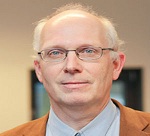The International, multi-disciplinary project is based on the Indian Ocean World (IOW) project with cross cultural study of literary networks in a global context by integrating new image processing techniques with social network analysis.
In the project, four teams are divided between humanities and engineering, from the U.S., Canada and Netherlands which they undertake the cross-cultural study of literary networks and the onset various global modernisms across China, the Middle East and Europe. This project seeks to combine image processing network science and test analysis to study cultures of literary communication within a global context.
Synchromedia Role
- Synchromedia experience in document and map image analysis will play a central role in researching all new questions posed by the project under Direction of Professor Cheriet. Synchromediateam will concentrated their research on new form of text analysis, new methods for interpreting quantitative network measures in context of cultural history.
- Synchromedia will employ Visual Language Processing (VLP), new image recognition techniques in a way to generate statistical relationships between elements in collections which will open access to a much broader spectrum of the world’s textual cultures for large scale text analysis.
- Synchromedia will equip with a Culture Box Storage Cluster and at the same time will be use of the central processing compute Cluster named “Guillimin” which is already exists. This infrastructure will significantly contribute to knowledge, understanding in the fields of computational literary, studies visual language processing, document image analysis and relation discovery. With the Culture Box storage cluster three other components are included in the infrastructure; this project requires a dedicated storage cluster. Is planned in order a) to preserve the results including the generated representation and relation data to be accessible by the public and research communities and b) to insure protection by avoiding faults in non-dedicated infrastructure, at technical or administrative levels.
Funders
This project is being funded by Social Sciences and Humanities Research Council of Canada (SSHRC), by Natural Sciences and Engineering Research (NSERC) and by Canadian Foundation for Innovation (CFI) for a period of 2 years starting in 2013.
![]()


Project partners
Prof. Andrew Piper Prof. Elaine Treharne Prof. Dr. Lambert Schomake



McGill University Standford University University of Groningen
